Some daily sky sights among the ever-changing Moon, planets, and stars.
Nova Sagittarii update: Nearly a month after its outburst, the nova in the Sagittarius Teapot continues to fluctuate between about magnitude 4.5 and 6. It's fairly well up in the south-southeast now before the beginning of dawn. Article with charts and up-to-date light curve.

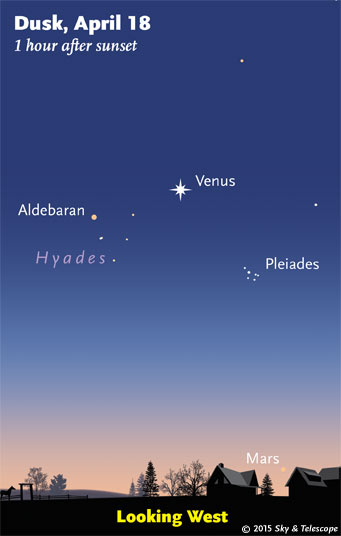
Friday, April 10
During and after late twilight, look for the Pleiades just 3° to the upper right of bright Venus in the west. That's about two finger-widths at arm's length.
Upper left of Venus by 13° is 1st-magnitude Aldebaran, an orange-yellow firespark.
Saturday, April 11
The Pleiades are closest to Venus this evening: about 2½° to its right as twilight fades away in the west, as shown here.
Last-quarter Moon tonight (exact at 11:44 p.m. EDT). The Moon rises around 2 a.m. Sunday morning daylight-saving time or even a bit later. It shines to the left of the Sagittarius Teapot through the rest of Sunday's early-morning hours.
Sunday, April 12
With the Moon out of the evening sky, see if you can spot the big, soft Beehive Star Cluster (M44) in central Cancer with your unaided eyes. Bright Jupiter guides the way; after nightfall this week, M44 is to the right of Jupiter by 5° (about three finger-widths at arm's length). Is your sky too light-polluted? Binoculars bring it right out.
Binoculars will also show Cancer's second open cluster, M67, much smaller and dimmer but still a fairly easy find. And in northern Cancer are two fine binocular double stars. See Gary Seronik's Binocular Highlight column and chart in the April Sky & Telescope, page 45.
Monday, April 13
Now Venus stands smack on the line from the Pleiades to Aldebaran, less than a third of the way from the former to the latter.
Io eclipses Europa among Jupiter's moons. Io's shadow falls on Europa from 9:29 to 9:33 p.m. Eastern Daylight Time. At the middle of this time, Europa will dim by a very obvious 2.3 magnitudes. More such events are coming up! See Bob King's article Catch the Last Best Antics of Jupiter’s Moons.
Tuesday, April 14
After dark as spring advances, the Big Dipper high in the northeast is tipping over as if to dump water into the dim Little Dipper's bowl, which is swinging up far below.
Late tonight an 8.9-magnitude star near Spica will be occulted by the fainter asteroid 595 Polyxena for telescope users along a path from Maine through southern Ontario, Michigan, Nebraska, and northern California. The star should vanish for up to 8 seconds around 7:29 Universal Time for Maine, and 7:34 UT at the West Coast. Path map and finder charts for the star.
Wednesday, April 15
Bright Arcturus is climbing high in the east these evenings, and equally bright Capella is descending high in the northwest. They stand at exactly the same height above your horizon at some moment between about 9:00 and 10:30 p.m. daylight-saving time, depending mostly on how far east or west you live in your time zone. How accurately can you time this event for your site? It happens 4 minutes earlier every night.
Thursday, April 16
A line from Venus leftward through Aldebaran now points just below Orion's Belt, almost three times farther on. Watch from night to night to see how fast this alignment changes as Venus moves against the background stars.
Friday, April 17
Callisto occults Ganymede among Jupiter's moons. Dark Callisto crosses in front of Ganymede from 9:27 to 9:37 p.m. Eastern Daylight Time. Their combined light will dim by 1.0 magnitude during the middle of this time. Start watching early to see them moving together into a blend.
Now that Jupiter is far from opposition, we see shadows in the Jovian system falling far enough sideways that an eclipsed satellite and its eclipser appear widely separated in a telescope's view. So we can see the eclipsed satellite dimming by itself, uncontaminated by the light of the eclipser. (The tables in Sky & Telescope for these events presume that the two satellites appear blended and give their combined magnitude.)
More such events are coming up! See Bob King's article Catch the Last Best Antics of Jupiter’s Moons.
Saturday, April 18
As twilight fades into night, look high in the west for Pollux and Castor lined up almost horizontally. They're well to the lower right of bright Jupiter. Pollux and Castor (the heads of the now-almost-upright Gemini twins) form the top of the enormous Arch of Spring. The two ends of the Arch are Procyon to their lower left, and brighter Capella farther to their lower right.
New Moon (exact at 2:57 p.m. EDT).
Want to become a better astronomer? Learn your way around the constellations. They're the key to locating everything fainter and deeper to hunt with binoculars or a telescope.
This is an outdoor nature hobby; for an easy-to-use constellation guide covering the whole evening sky, use the big monthly map in the center of each issue of Sky & Telescope, the essential guide to astronomy. Or download our free Getting Started in Astronomy booklet (which only has bimonthly maps).

Once you get a telescope, to put it to good use you'll need a detailed, large-scale sky atlas (set of charts). The standards are the little Pocket Sky Atlas, which shows stars to magnitude 7.6; the larger and deeper Sky Atlas 2000.0 (stars to magnitude 8.5); and once you know your way around, the even larger Uranometria 2000.0 (stars to magnitude 9.75). And read how to use sky charts with a telescope.
You'll also want a good deep-sky guidebook, such as Sue French's Deep-Sky Wonders collection (which includes its own charts), Sky Atlas 2000.0 Companion by Strong and Sinnott, the bigger Night Sky Observer's Guide by Kepple and Sanner, or the beloved if dated Burnham's Celestial Handbook.
Can a computerized telescope replace charts? Not for beginners, I don't think, and not on mounts and tripods that are less than top-quality mechanically (able to point with better than 0.2° repeatability, which means fairly heavy and expensive). As Terence Dickinson and Alan Dyer say in their Backyard Astronomer's Guide, "A full appreciation of the universe cannot come without developing the skills to find things in the sky and understanding how the sky works. This knowledge comes only by spending time under the stars with star maps in hand."
This Week's Planet Roundup
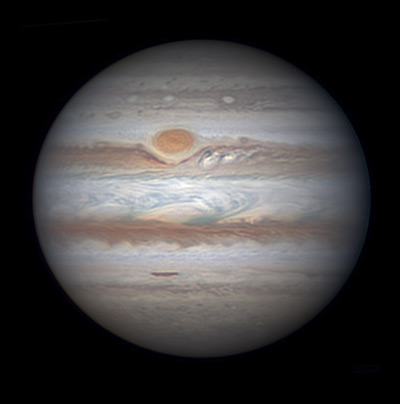
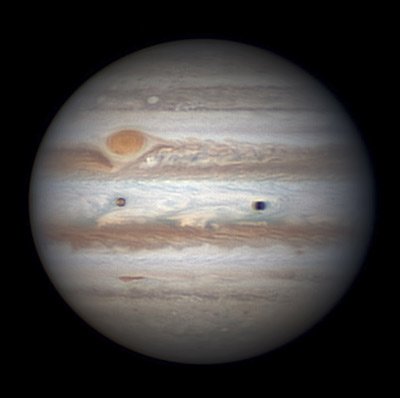
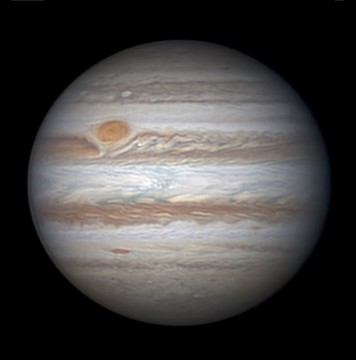
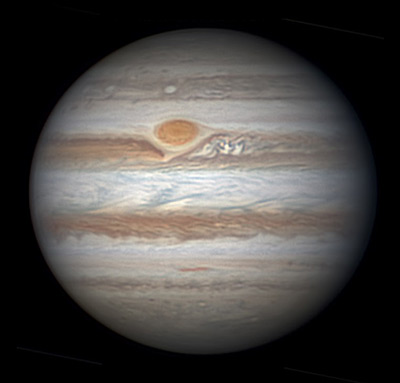
Mercury is hidden deep in the glow of sunset.
Venus (magnitude –4.1, in Taurus) blazes in the west during and after twilight — the "Evening Star." It doesn't set in the west-northwest until nearly two hours after dark. The Pleiades pass to its right on April 10th and 11th. Aldebaran is to Venus's left around the 16th (depending on your latitude). In a telescope, Venus is still small and gibbous.
Mars (magnitude +1.4, less than 1% as bright as Venus) is sinking away into the sunset. It's 22° to the lower right of Venus on April 10th and 25° from it by the 17th. Binoculars will help.
Jupiter (magnitude –2.3, in Cancer) shines high in the south at dusk. It's the brightest point of light high on that side of the sky. Get your scope on it early before it moves lower into the southwest and west. Don't expect to see nearly the detail with your eye that video-frame stacking with a large amateur telescope can bring out, such as in the fine images here.
Saturn (magnitude +0.2, at the head of Scorpius) rises around 11 p.m. daylight-saving time and is highest in the south in early-morning hours.
Below or lower left of Saturn (by 9°) is orange Antares, not quite as bright. The next brightest star in the area is Delta Scorpii, now in its 15th year of outburst; look half as far to Antares' lower right or, before dawn, directly below Antares.
Uranus and Neptune are out of sight in the glow of dawn.
__________________________
All descriptions that relate to your horizon — including the words up, down, right, and left — are written for the world's mid-northern latitudes. Descriptions that also depend on longitude (mainly Moon positions) are for North America.
Eastern Daylight Time (EDT) is Universal Time (UT, UTC, or GMT) minus 4 hours.
__________________________
“This adventure is made possible by generations of searchers strictly adhering to a simple set of rules. Test ideas by experiments and observations. Build on those ideas that pass the test. Reject the ones that fail. Follow the evidence wherever it leads, and question everything. Accept these terms, and the cosmos is yours.”
— Neil deGrasse Tyson, 2014.
½ ¼ ° ′ ″ ×
 0
0
Comments
You must be logged in to post a comment.